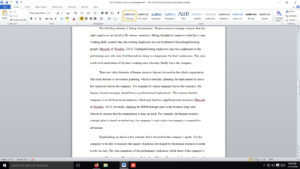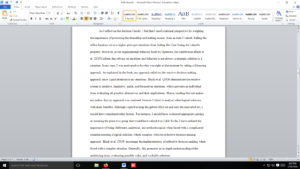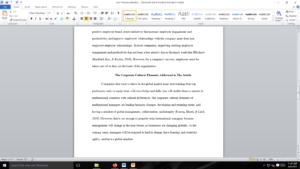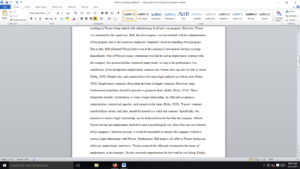I provide you a link to the textbook so you could use it for the research, Decision Making is chapter 6.
The textbook, Organizational Behavior, is freely available online at:
https://openstax.org/details/books/organizational-behavior
Description : 
We like to think that decisions should be, and are, made using a rational process. As described in Chapter Six, issues are defined, alternatives are generated, criteria for evaluating these alternatives are developed, and the alternatives are evaluated against these criteria. Pros and cons of each alternative are generated and considered. In human resource management, the process that should be used when evaluating candidates for a job is described in this fashion. (See Table 17.2)
In reality, many decisions are made in much less rational manner. Chapter Six describes some biases in decision-making, and people often use heuristics to try and narrow down choices. The chapter provides many examples of challenges in making decisions, including a table with some logical fallacies. (A “less than scientific” list of many potential biases and fallacies is available in Wikipedia ( https://en.wikipedia.org/wiki/List_of_cognitive_biases). In a current decision as to whether to get rid of some office furniture in my home, I am probably influenced by the “IKEA Effect.”)
For this paper, focus on one “significant” decision you have made in your life. It could be regarding a job, where to attend college, what major to study, who to marry (or not), or involve a major purchase. Look back on that decision and reflect on how rationally, or irrationally, the decision was made. Identify the biases and heuristics that may have influenced the decision, and describe their impact. Finally, describe whether you believe the final decision, however flawed the process, was a good one or not.
Requirements: 
– 1400 – 2000 words
– Referencing of all sources used.
– APA format for the paper and references.
Answer preview
As I reflect on my decision, the IKEA effect played a significant part in my thinking approach during the decision-making approach. During decision-making, people tend to use mental shortcuts, also known as heuristics or cognitive biases. Although these biases enable an individual to settle on a solution, they can be misleading by preventing logical thinking. According to Norton et al. (2011), the IKEA effect is a biased way of reasoning that makes an individual get a skewed picture of how their efforts in developing an object as highly valuable. Such an individual increases the assembled or self-made product’s valuation by forking over extra money for putting much effort into the work. This effect is evident in my decision to sell the set of furniture I renovated by adding details on the tabletop and edges to make it appealing. Norton et al. (2011) explain that people have the psychological desire to feel competent. In my case, I needed to convey my innovative skills and ability to take charge of the situation and deliver more valuable and creative second-hand office furniture.
[1484 Words]
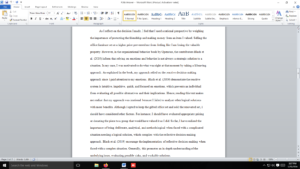
Cognitive Bias in Decision-Making
